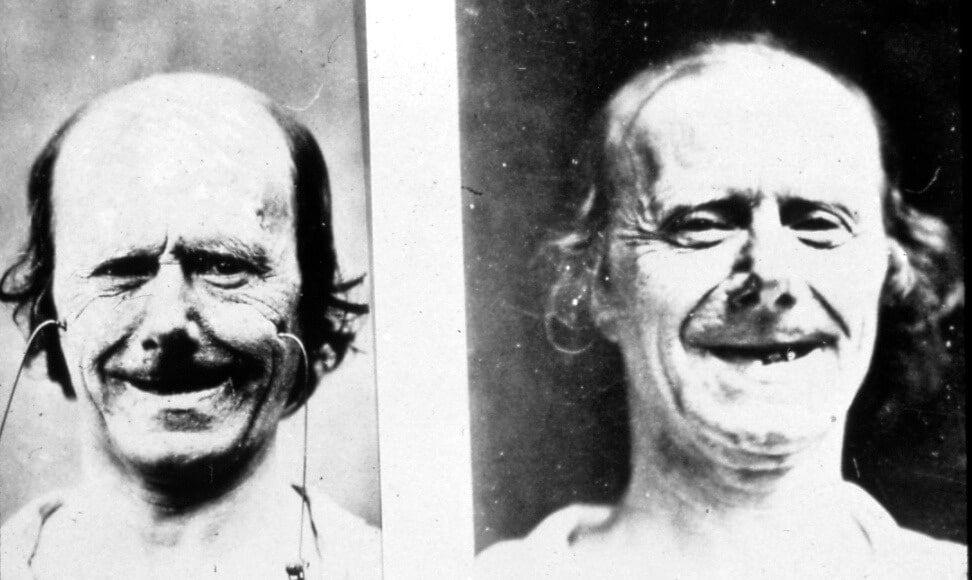Funtabulously Frivolous Friday Five 323
Just when you thought your brain could unwind on a Friday, you realise that it would rather be challenged with some good old fashioned medical trivia FFFF, introducing the Funtabulously Frivolous Friday Five 323
Question 1
I was recently approached by a mildly disgruntled trainee lamenting the fact that their consultant was treating them like a medical student. Who was famously buried in their white belt to symbolise being the eternal student?
Reveal the funtabulous answer
Kanō Jigorō (1860 – 1938)– the founder of Judo he was also a strong advocate for education and served for the Ministry of Education in Tokyo from 1898 – 1901.
If only I had been quick enough to make this reference to the trainee. But to all you FFFFers, remember we are all eternal students.
Question 2
When would you perform a Dick test?
Reveal the funtabulous answer
Well I’m sure a few scathing answers were conjured up by some. Its actually something we wouldn’t do unless you liked infectious diseases like Gladys or George Dick, this is a skin test to check susceptibility to scarlet fever:
Dick Test (1924)
In 1923, Gladys Dick and George Dick isolated haemolytic streptococcus as the ‘causative agent of scarlet fever’. They proceeded to develop ‘Experimental Scarlet Fever‘ in test patients with an apparently pure culture of a haemolytic streptococcus isolated from a case of scarlet fever. The Dick’s isolated the specific causative toxin and used this in a skin test to determine susceptibility to scarlet fever (strongly positive – at risk of developing; negative – conferred immunity by prior exposure).
The filtrate of the culture that produced experimental scarlet fever, when used in the proper dilution, gave positive or strongly positive skin tests in 41.6% of the persons who had no history of scarlet fever. All of the convalescent scarlet fever patients tested showed negative or only slightly positive reactions. The action of the filtrate on the skin was inhibited by convalescent scarlet fever serum mixed with the filtrate before it was injected, or given intramuscularly before the test was made. In two instances in which it was possible to observe the test before and after an attack of scarlet fever, it was positive before the attack, and negative during convalescence. in conclusion: The skin test described bears a specific relation to immunity to scarlet fever.
Dick, Dick 1924
Larger doses of the toxin was found to provide active immunization. George and Gladys Dick went on to develop an antitoxin for those who had already developed scarlet fever, and later developed a vaccine for the disease.
Reference:
- Gladys Dick – LITFL
Question 3
What is a Duchenne smile?
Reveal the funtabulous answer
A Duchenne smile involves contraction of both the zygomatic major muscle (which raises the corners of the mouth) and the orbicularis oculi muscle (which raises the cheeks and forms crow’s feet around the eyes).
The name is a nod to French anatomist Guillaume-Benjamin Amand Duchenne de Boulogne (1806 – 1875), who studied emotional expression by stimulating various facial muscles with electrical currents. (The technique hurt so much, it’s been said, that Duchenne performed some of his tests on the severed heads of executed criminals.)
In his 1862 book Mecanisme de la Physionomie Humaine, Duchenne wrote that the zygomatic major can be willed into action, but that only the “sweet emotions of the soul” force the orbicularis oculi to contract. “Its inertia, in smiling,” Duchenne wrote, “unmasks a false friend.”
Want to test your ability to spot a fake smile, test your skills against these celebrities on Paul Ekman Group – Smile Quiz.
Reference:
- Duchenne GB. Mécanisme de la physionomie humaine. 1862
- Duchenne GB. Analyse électro-physiologique de l’expression des passions. 1862
Question 4
Mosquito bites are hardly the highlight of any emergency medicine textbook nor probably featured. There is however a syndrome beginning with ‘S’ and a condition called SMBA. Can you name the syndrome and the condition?
Reveal the funtabulous answer
Skeeter Syndrome and Severe Mosquito Bite Allergy
Skeeter syndrome is a larger local reaction to a mosquito bite. The reaction is often so severe it looks like there should be an infectious aetiology but they are solely caused by allergenic polypeptides in the mosquito saliva.
SMBA – Severe Mosquito Bite Allergy which occurs mainly in young East Asians with an EBV infection of chronic active EBV. SMBA has also been reported to occur in rare cases of EBV positive Hodgkin disease, some types of leukaemia and mantle cell lymphoma.
SMBA is characterised by the development of skin redness, swelling, ulcers, necrosis and/or scarring at the site of a mosquito bite. This is often accompanied by fever, malaise and enlarged lymph nodes.
Reference:
- Simons R, Esetelle F and Peng Z. Skeeter syndrome. J Allergy and Clinical Immunology. 1999;104(3):705-707
- Kyriakidis I et al. Primary EBV infection and hypersensitivity to mosquito bites: a case report. Virologica Sinica. DOI: 10.1007/s12250-016-3868-4
Question 5
What is hippus?
Reveal the funtabulous answer
Pupillary hippus, also known as pupillary athetosis, is spasmodic, rhythmic, but regular dilating and contracting pupillary movements between the sphincter and dilator muscles. Pupillary hippus comes from the Greek hippos meaning horse, like the eye is galloping. Another term for hippus is pupillary unrest.
It is considered benign but there are multiple case reports largely of neurological aetiology including meningitis, syphilis, epilepsy, non-convulsive status, CNS tumours, MS, Myasthenia Gravis and trauma.
Reference:
- Fernández JL et al.Pupillary hippus as clinical manifestation of refractory autonomic nonconvulsive status epileptics: Pathophysiological implications. Seizure: European Journal of Epilepsy. 2018;63:102-104
…and finally

FFFF
Funtabulously Frivolous Friday Five
Dr Neil Long BMBS FACEM FRCEM FRCPC. Emergency Physician at Kelowna hospital, British Columbia. Loves the misery of alpine climbing and working in austere environments (namely tertiary trauma centres). Supporter of FOAMed, lifelong education and trying to find that elusive peak performance.






